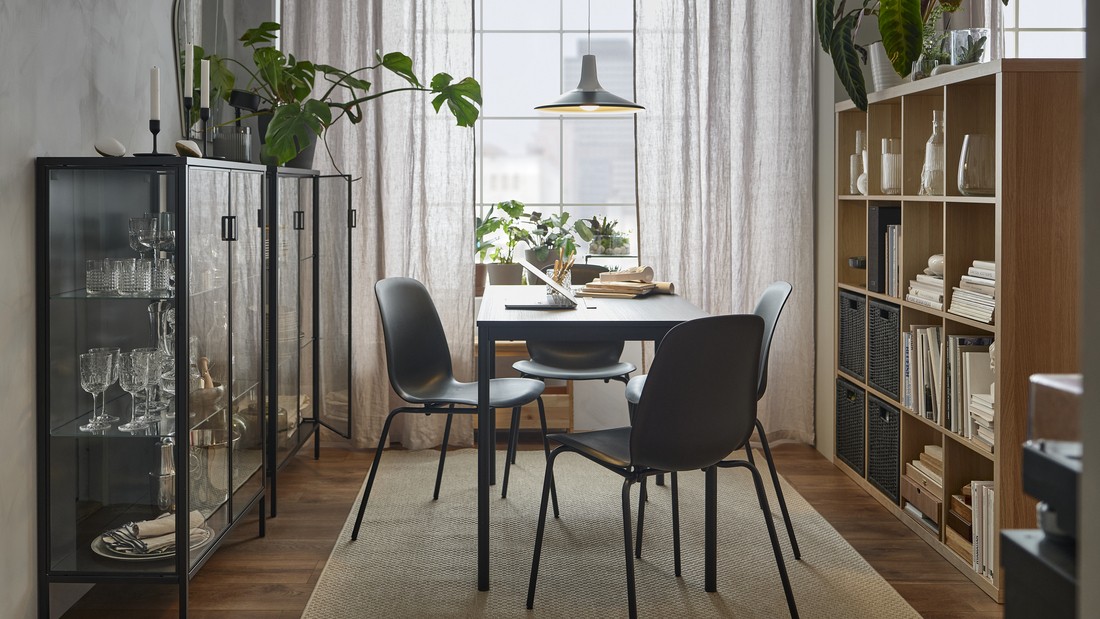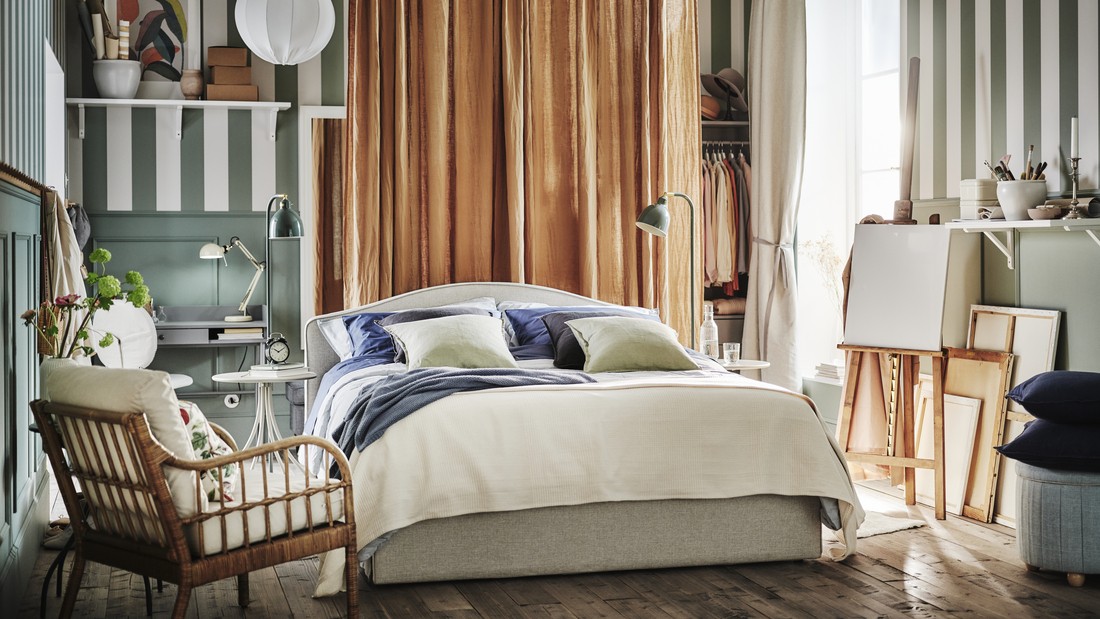Selecting the right curtain and wall color combination is crucial for creating a design that is visually appealing and functional. By considering the room’s function and lighting, you can ensure that the colors work well together. Here are some tips for achieving harmonious curtains and walls:
Adjusting to room function
The function of a room affects the choice of curtain and wall colors. Each room has a different purpose and atmosphere, which should be considered when selecting colors.
- Living Room: For the living room, choose color combinations that create a warm and welcoming impression. Neutral colors like white on the walls can be paired with brightly colored or textured curtains to add character without making the space feel cramped. For example, a harmonious and calming effect can be achieved with light gray walls and dark gray curtains.
- Bedroom: The bedroom needs a calm and comfortable atmosphere. Soft colors like light blue, mint green, or gray are often ideal choices. Select curtains that match the wall color to create a harmonious and relaxing space. For instance, lavender curtains combined with pale blue walls can create an ideal environment for a restful night’s sleep.
- Home Office: For a home office, choose colors that enhance focus and productivity. This combination creates a professional and comfortable environment. For example, white curtains can be paired with dark gray walls to provide a clean and orderly impression, improving an efficient work atmosphere.
Considering lighting
Natural and artificial lighting affects how curtain and wall colors appear and function in a room.
- Natural Light: If a room receives ample natural light, you can experiment with darker or bolder colors. Dark-colored curtains on large windows can create an interesting contrast with abundant natural light.
- Artificial Light: Also consider artificial lighting in the room. Warm yellow light can make curtain and wall colors feel cozier, while cool white light highlights details and provides a fresh effect.
Color combinations for various decor styles
Aligning curtain and wall color combinations with interior decor styles can enhance aesthetics and create the desired atmosphere. Each decor style has different color approaches, and selecting the right combinations can strengthen the room's character. Here are color combination ideas for popular decor styles:
Minimalist style
In minimalist style, neutral color combinations like white or gray for curtains and walls create a clean and elegant look. Opt for white or light gray walls and pair them with white or soft gray curtains to maintain a tidy and organized impression.
Choosing curtains in these neutral colors helps visually expand the space and provides a serene and orderly feel. Subtle textures on the curtains also complement the minimalist style, adding a touch of simplicity without disrupting the clean and straightforward ambiance.
Scandinavian style
Scandinavian style focuses on using natural colors and light color palettes to create a bright and fresh atmosphere. To achieve this aesthetic, white or beige walls can be paired with pastel-colored curtains like mint, light gray, or pale blue.
Choosing light curtain colors for the walls adds warmth and makes the room feel more spacious. Combining wall and curtain colors with simple patterns or natural motifs can enhance the tranquil and harmonious atmosphere, aligning with the clean and functional design principles of Scandinavian style.
Modern style
Modern style often utilizes strong color contrasts to create striking and dynamic effects. For modern spaces, neutral-colored walls like white or gray can be paired with bright-colored or accent curtains, such as red, navy blue, or emerald green.
This combination adds a dramatic touch to the room and reinforces the modern and bold character of the interior design. Curtains with contrasting colors or bold patterns provide additional energy and enliven the room’s atmosphere. Choosing curtains with standout or contrasting colors will help create a stylish and impactful look.
Common mistakes in curtain and wall color coordination
Ignoring the overall color scheme of the house often results in visual imbalance, where curtain and wall colors do not complement each other. To create a harmonious atmosphere, it is essential to consider how curtain and wall paint colors interact with other elements in the room, such as furniture and accessories. Read on for more information.
Ignoring the overall color scheme
To create a harmonious and integrated space, it is crucial to pay attention to the overall color scheme of the entire house. For example, if you choose bright-colored curtains, such as pink, without considering more neutral wall colors like white or gray, the result might be less balanced.
Combining gray walls with bright-colored curtains requires attention to other elements in the room, such as furniture and accessories, to ensure everything works together in a cohesive interior design. By considering the overall color scheme, you can avoid a disjointed look and ensure that each element in the room harmonizes well.
Choosing too-contrasting colors
Choosing colors that are too contrasting between curtains and walls can make the room feel unbalanced. For instance, pairing blue walls with highly contrasting curtains, such as pink curtains, can make the room appear less harmonious.
Excessive contrast can make the eyes feel strained and disrupt the overall room aesthetics. As a solution, opt for curtains with a slight contrast that still aligns with the wall color. For example, if the walls are gray, consider curtains in a slightly lighter shade of gray or a color that aligns with the room’s color scheme.
By finding curtains that match well and maintaining visual balance, you can create a room that is aesthetically pleasing and enjoyable to view.
Smart ways to choose curtain colors for colored walls from IKEA


